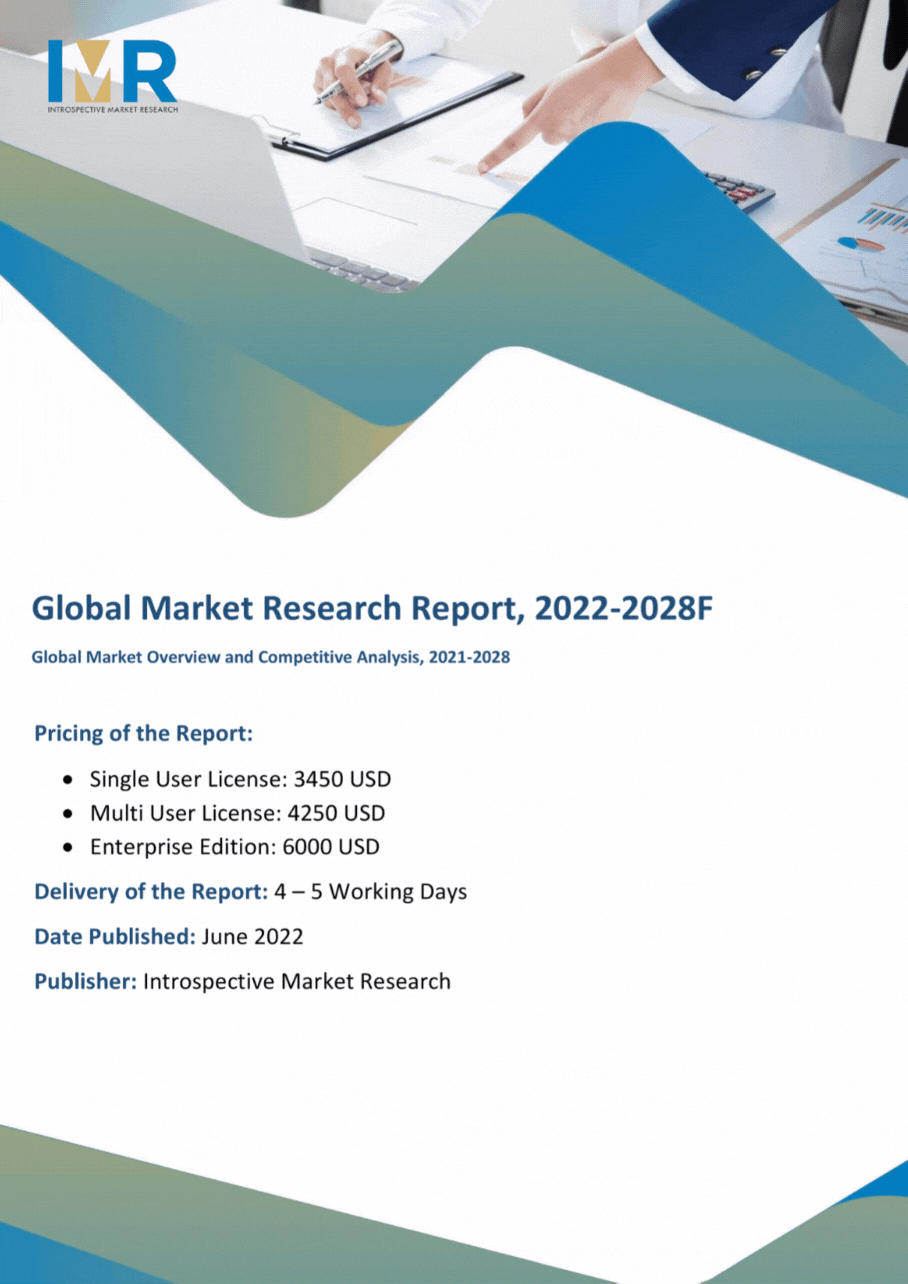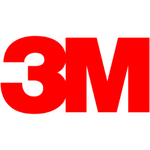Global Eye Tracking Market Overview
The Eye Tracking Market size is anticipated to reach USD 1352.75 Million by 2028 from an estimated USD 314.01 Million in 2021, growing at a CAGR of 23.2% globally.
The eye-tracking is an advanced sensor technology that detects the presence of a person that helps to observe and measure eye movements, point of gaze, pupil dilation, focus on the subject’s visual attention, what they are ignoring, and what they engage with. The eye-tracking system consists of one or more cameras, some light sources, and computing capabilities. Edmund Huey built the first eye tracker that track eye movement in 1908. There are two types of eye-tracking such as screen-based eye tracking, and eye-tracking glasses. Screen-based eye tracking helps to record and analysis of responses to multimedia stimuli and eye-tracking glasses help researchers to find how subjects view and interact in the real, dynamic world. The eye-tracking system is used as a human-computer interface input device in psychology, visual system science, marketing, and psycholinguistics that support the growth of the market.
![]()
Market Dynamics And Factors For Eye Tracking Market
Drivers:
The Growing Demand for Eye-Tracking Technology
The eye-tracking technology is used in various organizations such as in market research activities, used in advertisements. It is also used in scientific research fields like psychology and neuroscience, infant and child development, and clinical research, to capture human behavior. The eye-tracking technology has high demand in shopper research, packaging research, UX research, and the retail sector, especially in the FMCG sector. The eye-tracking system is combined with instruments that are used in the diagnosis of diseases such as attention deficit hyperactivity disorder (ADHD), autism spectrum disorder (ASD), obsessive-compulsive disorder (OCD), schizophrenia, Parkinson’s, and Alzheimer’s disease. It is also used in the gaming industry, and in sports games to analyze the individual performance of athletes. These all factors support the growth of the eye tracking market.
Restraints:
High Cost Required For the Eye Tracking Technology
The eye-tracking technology requires a high cost is one of the disadvantages of eye-tracking technology that hamper the growth of the market. For eye-tracking technology, there is considerable financial, labor resource and training required. These factors can be expensive. In addition to this, this system tracks one person at a time, so it is time-consuming for tracking a group of a person and reducing the experiment time, there is a need for multiple tracking devices. The high cost required to install the multiple devices of eye-tracking owing to hardware, scene camera, multi-display, cognitive workloads uses more price. These all factors anticipated reducing the growth of the market of eye-tracking in the forecast year.
Opportunity:
Adoption of Eye-Tracking Technology in Devices Like AR/VR
The growing demand for augmented reality (AR) and virtual reality (VR) devices provides a lucrative opportunity for the eye-tracking market. AR and VR are both technologies mostly used in the healthcare sector. This device offers the digital and physical worlds. They provide visual information. The eye-tracking technology can be installed in AR and VR devices like headgears and PCs. Eye-tracking technology captures the eye position and movements and analyzes the gaze position. Researchers use this technology to know the visual information of human processing and collected insights into the human mind. Thus, eye-tracking technology use increased in AR/VR devices by researchers, which is a profitable opportunity for the growth of the market in the analysis year.
Segmentation Analysis of Eye Tracking Market
By Type, the optical tracking system is anticipated to have maximum market share in eye tracking. It is the 3D localization technology that contains two or three high qualities cameras and provides digital signals all over the place. Each camera is equipped with an IR light. The growing demand for optical tracking systems in VR and AR is due to the record of both active and passive motions of the body. One of the advantages of the optical tracking system is there is no need for wires to be attached to the track. Optical tracking enables to track of several subjects simultaneously. This system is inexpensive. These all factors support the growth of the eye tracking market in the forecast year.
By Component, the hardware segment is projected to dominate the market of eye-tracking in the forecast year. The hardware component consists of a head-mount capturing system. This system contains cameras, sensors, eye-tracking glass or lenses, and for storing and recording the data captured by tracker subjects, internal and external storage devices are available. Hardware can be connected easily, and experiment design and analysis no need for programming skills, thus it has a large share in the market of eye-tracking that supports the growth of the market.
By Applications, the eye-tracking system is mostly used in the research sector, thus it is dominated the segment in the eye-tracking market. It is used in different fields of psychology, and neuroscience to capture eye movement. To understand the perceptual, cognitive, and social-emotional development from birth through early adulthood, infant and child research use this technology. In engineering research, this technology helps to capture how humans engaged with the system, machine, and process. The eye-tracking system is used in clinical and medical research to identify ocular diseases such as autism, ADHD, Parkinson’s disease, and others. These all factors propel the growth of the eye tracking market in the analysis year.
Regional Analysis Of Eye Tracking Market
North America is anticipated to have the maximum market share in the eye-tracking in the forecast year. The high adoption of new advanced technology increases the research activities to capture human behavior. The United States has dominated the region in the North American region due to rising the adoption of smart sensors, and contactless biometric systems. Increase the adoption of eye-tracking technology in the healthcare sector, and in scientific research fields such as psychology and neuroscience, infant and child development, and clinical research, to capture human behavior. The high presence of key players in the eye-tracking system in the US. These all factors support the growth of the market of eye tracking in this region in the forecast year.
Europe is the second dominated region in the market of eye-tracking. The growing adoption of eye-tracking technology in the healthcare sectors, research institutes, and retail sectors such as FMCG. UK and Germany are the dominant country in the Europe region owing to rising government investment in the new development of new technology, and an increase in the use of the military and aerospace sector. In addition to this key player in Europe, the region focused on partnerships, mergers, and acquisitions to increase research and development and expand the business which helps to increase the market of eye-tracking in the forecast year.
The Asia Pacific has significant growth in the eye-tracking market. The rising awareness regards the eye-tracking technology in various sectors such as research institutes, healthcare sectors, and the retail sector contributes to the growth of the market eye-tracking. In addition to this research and development of new technology and their adoption is increasing in the Asia Pacific region that propelling the growth of the market of eye-tracking. The eye-tracking technology is used in e-sport viewers in the Asia Pacific region. These all factors anticipated the growth of the eye-tracking market of this region in the analysis year.
The Middle East and Africa have slow growth in the eye-tracking market. The eye-tracking technology assists infant and child research, education, and others. Eye-tracking technology is used in hospitals to diagnose multiple sclerosis and determination of parkinsonism in this region. That supports the increase in the demand for eye-tracking technology in hospitals which propels the growth of the market in this region. In the MEA region, increasing the research institutes, and rising research and development activities also support the growth of the market.
COVID-19 Impact Analysis On Eye Tracking Market
The spread of covid 19 disrupts the supply chain of the various market containing eye tracking market. The outbreak of covid 19 decreased the growth of the eye-tracking market. In the pandemic situation, eye-tracking technology-based products have been negatively demanded in retail stores, advertisement companies, and research labs. The advertisement companies, research lap, and retail stores were shut down during this period. Thus, market growth of eye-tracking is negatively impacted in covid-19.
Top Key Players Covered In Eye Tracking Market
- Tobii AB (Sweden)
- SensoMotoric Instruments (Germany)
- SR Research (Canada)
- Seeing Machines (Australia)
- EyeTracking (US)
- PRS IN VIVO (US)
- Smart Eye AB (Sweden)
- LC Technologies (US)
- Ergoneers GmbH (Germany)
- EyeTech Digital Systems (US) and other Major Players.
Key Industry Development In Eye Tracking Market
- In April 2021, Tobii partnered with NVIDIA to increase VR image quality in VRSS2. After the collaboration, the company established the HP Reverb G2 omnicept edition of HP’s VR headset, and the headset has both Tobii Eye Tracking and NVIDIA VRSS 2.
- In June 2020, Tobii Pro, a business unit of Tobii (Sweden), declared the launching of its next-generation wearable eye tracker. The name of that tracker is Tobii Pro Glasses 3 is built for measuring attention in any real-world scenario.
- In May 2020, Tobii Dynavox, a business unit of Tobii (Sweden), announced the launch of the next-generation communication device I-Series, with built-in eye tracking. The new I-Series is established for those people have disabilities such as cerebral palsy and amyotrophic lateral sclerosis (ALS). It offers them a voice to communicate and become more independent.
|
Global Eye Tracking Market |
|||
|
Base Year: |
2021 |
Forecast Period: |
2022-2028 |
|
Historical Data : |
2016 to 2020 |
Market Size in 2021: |
USD 314.01 Mn. |
|
Forecast Period 2022-28 CAGR: |
23.2% |
Market Size in 2028: |
USD 1352.75 Mn. |
|
Segments Covered: |
By Type |
|
|
|
By Component |
|
||
|
By Applications |
|
||
|
By Region |
|
||
|
Key Market Drivers: |
|
||
|
Key Market Restraints: |
|
||
|
Key Opportunities: |
|
||
|
Companies Covered in the report: |
|
||
Chapter 1: Introduction
1.1 Research Objectives
1.2 Research Methodology
1.3 Research Process
1.4 Scope and Coverage
1.4.1 Market Definition
1.4.2 Key Questions Answered
1.5 Market Segmentation
Chapter 2:Executive Summary
Chapter 3:Growth Opportunities By Segment
3.1 By Type
3.2 By Component
3.3 By Application
Chapter 4: Market Landscape
4.1 Porter's Five Forces Analysis
4.1.1 Bargaining Power of Supplier
4.1.2 Threat of New Entrants
4.1.3 Threat of Substitutes
4.1.4 Competitive Rivalry
4.1.5 Bargaining Power Among Buyers
4.2 Industry Value Chain Analysis
4.3 Market Dynamics
4.3.1 Drivers
4.3.2 Restraints
4.3.3 Opportunities
4.5.4 Challenges
4.4 Pestle Analysis
4.5 Technological Roadmap
4.6 Regulatory Landscape
4.7 SWOT Analysis
4.8 Price Trend Analysis
4.9 Patent Analysis
4.10 Analysis of the Impact of Covid-19
4.10.1 Impact on the Overall Market
4.10.2 Impact on the Supply Chain
4.10.3 Impact on the Key Manufacturers
4.10.4 Impact on the Pricing
Chapter 5: Eye Tracking Market by Type
5.1 Eye Tracking Market Overview Snapshot and Growth Engine
5.2 Eye Tracking Market Overview
5.3 Electrooculography Systems
5.3.1 Introduction and Market Overview
5.3.2 Historic and Forecasted Market Size (2016-2028F)
5.3.3 Key Market Trends, Growth Factors and Opportunities
5.3.4 Electrooculography Systems: Grographic Segmentation
5.4 Optical Tracking Systems
5.4.1 Introduction and Market Overview
5.4.2 Historic and Forecasted Market Size (2016-2028F)
5.4.3 Key Market Trends, Growth Factors and Opportunities
5.4.4 Optical Tracking Systems: Grographic Segmentation
Chapter 6: Eye Tracking Market by Component
6.1 Eye Tracking Market Overview Snapshot and Growth Engine
6.2 Eye Tracking Market Overview
6.3 Hardware
6.3.1 Introduction and Market Overview
6.3.2 Historic and Forecasted Market Size (2016-2028F)
6.3.3 Key Market Trends, Growth Factors and Opportunities
6.3.4 Hardware: Grographic Segmentation
6.4 Software
6.4.1 Introduction and Market Overview
6.4.2 Historic and Forecasted Market Size (2016-2028F)
6.4.3 Key Market Trends, Growth Factors and Opportunities
6.4.4 Software: Grographic Segmentation
Chapter 7: Eye Tracking Market by Application
7.1 Eye Tracking Market Overview Snapshot and Growth Engine
7.2 Eye Tracking Market Overview
7.3 Research
7.3.1 Introduction and Market Overview
7.3.2 Historic and Forecasted Market Size (2016-2028F)
7.3.3 Key Market Trends, Growth Factors and Opportunities
7.3.4 Research: Grographic Segmentation
7.4 Retail
7.4.1 Introduction and Market Overview
7.4.2 Historic and Forecasted Market Size (2016-2028F)
7.4.3 Key Market Trends, Growth Factors and Opportunities
7.4.4 Retail: Grographic Segmentation
7.5 Automotive
7.5.1 Introduction and Market Overview
7.5.2 Historic and Forecasted Market Size (2016-2028F)
7.5.3 Key Market Trends, Growth Factors and Opportunities
7.5.4 Automotive: Grographic Segmentation
7.6 Healthcare
7.6.1 Introduction and Market Overview
7.6.2 Historic and Forecasted Market Size (2016-2028F)
7.6.3 Key Market Trends, Growth Factors and Opportunities
7.6.4 Healthcare: Grographic Segmentation
7.7 Consumer Electronics
7.7.1 Introduction and Market Overview
7.7.2 Historic and Forecasted Market Size (2016-2028F)
7.7.3 Key Market Trends, Growth Factors and Opportunities
7.7.4 Consumer Electronics: Grographic Segmentation
Chapter 8: Company Profiles and Competitive Analysis
8.1 Competitive Landscape
8.1.1 Competitive Positioning
8.1.2 Eye Tracking Sales and Market Share By Players
8.1.3 Industry BCG Matrix
8.1.4 Ansoff Matrix
8.1.5 Eye Tracking Industry Concentration Ratio (CR5 and HHI)
8.1.6 Top 5 Eye Tracking Players Market Share
8.1.7 Mergers and Acquisitions
8.1.8 Business Strategies By Top Players
8.2 TOBII AB
8.2.1 Company Overview
8.2.2 Key Executives
8.2.3 Company Snapshot
8.2.4 Operating Business Segments
8.2.5 Product Portfolio
8.2.6 Business Performance
8.2.7 Key Strategic Moves and Recent Developments
8.2.8 SWOT Analysis
8.3 SENSOMOTORIC INSTRUMENTS
8.4 SR RESEARCH
8.5 SEEING MACHINES
8.6 EYETRACKING
8.7 PRS IN VIVO
8.8 SMART EYE AB
8.9 LC TECHNOLOGIES
8.10 ERGONEERS GMBH
8.11 EYETECH DIGITAL SYSTEMS
8.12 OTHER MAJOR PLAYERS
Chapter 9: Global Eye Tracking Market Analysis, Insights and Forecast, 2016-2028
9.1 Market Overview
9.2 Historic and Forecasted Market Size By Type
9.2.1 Electrooculography Systems
9.2.2 Optical Tracking Systems
9.3 Historic and Forecasted Market Size By Component
9.3.1 Hardware
9.3.2 Software
9.4 Historic and Forecasted Market Size By Application
9.4.1 Research
9.4.2 Retail
9.4.3 Automotive
9.4.4 Healthcare
9.4.5 Consumer Electronics
Chapter 10: North America Eye Tracking Market Analysis, Insights and Forecast, 2016-2028
10.1 Key Market Trends, Growth Factors and Opportunities
10.2 Impact of Covid-19
10.3 Key Players
10.4 Key Market Trends, Growth Factors and Opportunities
10.4 Historic and Forecasted Market Size By Type
10.4.1 Electrooculography Systems
10.4.2 Optical Tracking Systems
10.5 Historic and Forecasted Market Size By Component
10.5.1 Hardware
10.5.2 Software
10.6 Historic and Forecasted Market Size By Application
10.6.1 Research
10.6.2 Retail
10.6.3 Automotive
10.6.4 Healthcare
10.6.5 Consumer Electronics
10.7 Historic and Forecast Market Size by Country
10.7.1 U.S.
10.7.2 Canada
10.7.3 Mexico
Chapter 11: Europe Eye Tracking Market Analysis, Insights and Forecast, 2016-2028
11.1 Key Market Trends, Growth Factors and Opportunities
11.2 Impact of Covid-19
11.3 Key Players
11.4 Key Market Trends, Growth Factors and Opportunities
11.4 Historic and Forecasted Market Size By Type
11.4.1 Electrooculography Systems
11.4.2 Optical Tracking Systems
11.5 Historic and Forecasted Market Size By Component
11.5.1 Hardware
11.5.2 Software
11.6 Historic and Forecasted Market Size By Application
11.6.1 Research
11.6.2 Retail
11.6.3 Automotive
11.6.4 Healthcare
11.6.5 Consumer Electronics
11.7 Historic and Forecast Market Size by Country
11.7.1 Germany
11.7.2 U.K.
11.7.3 France
11.7.4 Italy
11.7.5 Russia
11.7.6 Spain
11.7.7 Rest of Europe
Chapter 12: Asia-Pacific Eye Tracking Market Analysis, Insights and Forecast, 2016-2028
12.1 Key Market Trends, Growth Factors and Opportunities
12.2 Impact of Covid-19
12.3 Key Players
12.4 Key Market Trends, Growth Factors and Opportunities
12.4 Historic and Forecasted Market Size By Type
12.4.1 Electrooculography Systems
12.4.2 Optical Tracking Systems
12.5 Historic and Forecasted Market Size By Component
12.5.1 Hardware
12.5.2 Software
12.6 Historic and Forecasted Market Size By Application
12.6.1 Research
12.6.2 Retail
12.6.3 Automotive
12.6.4 Healthcare
12.6.5 Consumer Electronics
12.7 Historic and Forecast Market Size by Country
12.7.1 China
12.7.2 India
12.7.3 Japan
12.7.4 Singapore
12.7.5 Australia
12.7.6 New Zealand
12.7.7 Rest of APAC
Chapter 13: Middle East & Africa Eye Tracking Market Analysis, Insights and Forecast, 2016-2028
13.1 Key Market Trends, Growth Factors and Opportunities
13.2 Impact of Covid-19
13.3 Key Players
13.4 Key Market Trends, Growth Factors and Opportunities
13.4 Historic and Forecasted Market Size By Type
13.4.1 Electrooculography Systems
13.4.2 Optical Tracking Systems
13.5 Historic and Forecasted Market Size By Component
13.5.1 Hardware
13.5.2 Software
13.6 Historic and Forecasted Market Size By Application
13.6.1 Research
13.6.2 Retail
13.6.3 Automotive
13.6.4 Healthcare
13.6.5 Consumer Electronics
13.7 Historic and Forecast Market Size by Country
13.7.1 Turkey
13.7.2 Saudi Arabia
13.7.3 Iran
13.7.4 UAE
13.7.5 Africa
13.7.6 Rest of MEA
Chapter 14: South America Eye Tracking Market Analysis, Insights and Forecast, 2016-2028
14.1 Key Market Trends, Growth Factors and Opportunities
14.2 Impact of Covid-19
14.3 Key Players
14.4 Key Market Trends, Growth Factors and Opportunities
14.4 Historic and Forecasted Market Size By Type
14.4.1 Electrooculography Systems
14.4.2 Optical Tracking Systems
14.5 Historic and Forecasted Market Size By Component
14.5.1 Hardware
14.5.2 Software
14.6 Historic and Forecasted Market Size By Application
14.6.1 Research
14.6.2 Retail
14.6.3 Automotive
14.6.4 Healthcare
14.6.5 Consumer Electronics
14.7 Historic and Forecast Market Size by Country
14.7.1 Brazil
14.7.2 Argentina
14.7.3 Rest of SA
Chapter 15 Investment Analysis
Chapter 16 Analyst Viewpoint and Conclusion
|
Global Eye Tracking Market |
|||
|
Base Year: |
2021 |
Forecast Period: |
2022-2028 |
|
Historical Data : |
2016 to 2020 |
Market Size in 2021: |
USD 314.01 Mn. |
|
Forecast Period 2022-28 CAGR: |
23.2% |
Market Size in 2028: |
USD 1352.75 Mn. |
|
Segments Covered: |
By Type |
|
|
|
By Component |
|
||
|
By Applications |
|
||
|
By Region |
|
||
|
Key Market Drivers: |
|
||
|
Key Market Restraints: |
|
||
|
Key Opportunities: |
|
||
|
Companies Covered in the report: |
|
||
LIST OF TABLES
TABLE 001. EXECUTIVE SUMMARY
TABLE 002. EYE TRACKING MARKET BARGAINING POWER OF SUPPLIERS
TABLE 003. EYE TRACKING MARKET BARGAINING POWER OF CUSTOMERS
TABLE 004. EYE TRACKING MARKET COMPETITIVE RIVALRY
TABLE 005. EYE TRACKING MARKET THREAT OF NEW ENTRANTS
TABLE 006. EYE TRACKING MARKET THREAT OF SUBSTITUTES
TABLE 007. EYE TRACKING MARKET BY TYPE
TABLE 008. ELECTROOCULOGRAPHY SYSTEMS MARKET OVERVIEW (2016-2028)
TABLE 009. OPTICAL TRACKING SYSTEMS MARKET OVERVIEW (2016-2028)
TABLE 010. EYE TRACKING MARKET BY COMPONENT
TABLE 011. HARDWARE MARKET OVERVIEW (2016-2028)
TABLE 012. SOFTWARE MARKET OVERVIEW (2016-2028)
TABLE 013. EYE TRACKING MARKET BY APPLICATION
TABLE 014. RESEARCH MARKET OVERVIEW (2016-2028)
TABLE 015. RETAIL MARKET OVERVIEW (2016-2028)
TABLE 016. AUTOMOTIVE MARKET OVERVIEW (2016-2028)
TABLE 017. HEALTHCARE MARKET OVERVIEW (2016-2028)
TABLE 018. CONSUMER ELECTRONICS MARKET OVERVIEW (2016-2028)
TABLE 019. NORTH AMERICA EYE TRACKING MARKET, BY TYPE (2016-2028)
TABLE 020. NORTH AMERICA EYE TRACKING MARKET, BY COMPONENT (2016-2028)
TABLE 021. NORTH AMERICA EYE TRACKING MARKET, BY APPLICATION (2016-2028)
TABLE 022. N EYE TRACKING MARKET, BY COUNTRY (2016-2028)
TABLE 023. EUROPE EYE TRACKING MARKET, BY TYPE (2016-2028)
TABLE 024. EUROPE EYE TRACKING MARKET, BY COMPONENT (2016-2028)
TABLE 025. EUROPE EYE TRACKING MARKET, BY APPLICATION (2016-2028)
TABLE 026. EYE TRACKING MARKET, BY COUNTRY (2016-2028)
TABLE 027. ASIA PACIFIC EYE TRACKING MARKET, BY TYPE (2016-2028)
TABLE 028. ASIA PACIFIC EYE TRACKING MARKET, BY COMPONENT (2016-2028)
TABLE 029. ASIA PACIFIC EYE TRACKING MARKET, BY APPLICATION (2016-2028)
TABLE 030. EYE TRACKING MARKET, BY COUNTRY (2016-2028)
TABLE 031. MIDDLE EAST & AFRICA EYE TRACKING MARKET, BY TYPE (2016-2028)
TABLE 032. MIDDLE EAST & AFRICA EYE TRACKING MARKET, BY COMPONENT (2016-2028)
TABLE 033. MIDDLE EAST & AFRICA EYE TRACKING MARKET, BY APPLICATION (2016-2028)
TABLE 034. EYE TRACKING MARKET, BY COUNTRY (2016-2028)
TABLE 035. SOUTH AMERICA EYE TRACKING MARKET, BY TYPE (2016-2028)
TABLE 036. SOUTH AMERICA EYE TRACKING MARKET, BY COMPONENT (2016-2028)
TABLE 037. SOUTH AMERICA EYE TRACKING MARKET, BY APPLICATION (2016-2028)
TABLE 038. EYE TRACKING MARKET, BY COUNTRY (2016-2028)
TABLE 039. TOBII AB: SNAPSHOT
TABLE 040. TOBII AB: BUSINESS PERFORMANCE
TABLE 041. TOBII AB: PRODUCT PORTFOLIO
TABLE 042. TOBII AB: KEY STRATEGIC MOVES AND DEVELOPMENTS
TABLE 042. SENSOMOTORIC INSTRUMENTS: SNAPSHOT
TABLE 043. SENSOMOTORIC INSTRUMENTS: BUSINESS PERFORMANCE
TABLE 044. SENSOMOTORIC INSTRUMENTS: PRODUCT PORTFOLIO
TABLE 045. SENSOMOTORIC INSTRUMENTS: KEY STRATEGIC MOVES AND DEVELOPMENTS
TABLE 045. SR RESEARCH: SNAPSHOT
TABLE 046. SR RESEARCH: BUSINESS PERFORMANCE
TABLE 047. SR RESEARCH: PRODUCT PORTFOLIO
TABLE 048. SR RESEARCH: KEY STRATEGIC MOVES AND DEVELOPMENTS
TABLE 048. SEEING MACHINES: SNAPSHOT
TABLE 049. SEEING MACHINES: BUSINESS PERFORMANCE
TABLE 050. SEEING MACHINES: PRODUCT PORTFOLIO
TABLE 051. SEEING MACHINES: KEY STRATEGIC MOVES AND DEVELOPMENTS
TABLE 051. EYETRACKING: SNAPSHOT
TABLE 052. EYETRACKING: BUSINESS PERFORMANCE
TABLE 053. EYETRACKING: PRODUCT PORTFOLIO
TABLE 054. EYETRACKING: KEY STRATEGIC MOVES AND DEVELOPMENTS
TABLE 054. PRS IN VIVO: SNAPSHOT
TABLE 055. PRS IN VIVO: BUSINESS PERFORMANCE
TABLE 056. PRS IN VIVO: PRODUCT PORTFOLIO
TABLE 057. PRS IN VIVO: KEY STRATEGIC MOVES AND DEVELOPMENTS
TABLE 057. SMART EYE AB: SNAPSHOT
TABLE 058. SMART EYE AB: BUSINESS PERFORMANCE
TABLE 059. SMART EYE AB: PRODUCT PORTFOLIO
TABLE 060. SMART EYE AB: KEY STRATEGIC MOVES AND DEVELOPMENTS
TABLE 060. LC TECHNOLOGIES: SNAPSHOT
TABLE 061. LC TECHNOLOGIES: BUSINESS PERFORMANCE
TABLE 062. LC TECHNOLOGIES: PRODUCT PORTFOLIO
TABLE 063. LC TECHNOLOGIES: KEY STRATEGIC MOVES AND DEVELOPMENTS
TABLE 063. ERGONEERS GMBH: SNAPSHOT
TABLE 064. ERGONEERS GMBH: BUSINESS PERFORMANCE
TABLE 065. ERGONEERS GMBH: PRODUCT PORTFOLIO
TABLE 066. ERGONEERS GMBH: KEY STRATEGIC MOVES AND DEVELOPMENTS
TABLE 066. EYETECH DIGITAL SYSTEMS: SNAPSHOT
TABLE 067. EYETECH DIGITAL SYSTEMS: BUSINESS PERFORMANCE
TABLE 068. EYETECH DIGITAL SYSTEMS: PRODUCT PORTFOLIO
TABLE 069. EYETECH DIGITAL SYSTEMS: KEY STRATEGIC MOVES AND DEVELOPMENTS
TABLE 069. OTHER MAJOR PLAYERS: SNAPSHOT
TABLE 070. OTHER MAJOR PLAYERS: BUSINESS PERFORMANCE
TABLE 071. OTHER MAJOR PLAYERS: PRODUCT PORTFOLIO
TABLE 072. OTHER MAJOR PLAYERS: KEY STRATEGIC MOVES AND DEVELOPMENTS
LIST OF FIGURES
FIGURE 001. YEARS CONSIDERED FOR ANALYSIS
FIGURE 002. SCOPE OF THE STUDY
FIGURE 003. EYE TRACKING MARKET OVERVIEW BY REGIONS
FIGURE 004. PORTER'S FIVE FORCES ANALYSIS
FIGURE 005. BARGAINING POWER OF SUPPLIERS
FIGURE 006. COMPETITIVE RIVALRYFIGURE 007. THREAT OF NEW ENTRANTS
FIGURE 008. THREAT OF SUBSTITUTES
FIGURE 009. VALUE CHAIN ANALYSIS
FIGURE 010. PESTLE ANALYSIS
FIGURE 011. EYE TRACKING MARKET OVERVIEW BY TYPE
FIGURE 012. ELECTROOCULOGRAPHY SYSTEMS MARKET OVERVIEW (2016-2028)
FIGURE 013. OPTICAL TRACKING SYSTEMS MARKET OVERVIEW (2016-2028)
FIGURE 014. EYE TRACKING MARKET OVERVIEW BY COMPONENT
FIGURE 015. HARDWARE MARKET OVERVIEW (2016-2028)
FIGURE 016. SOFTWARE MARKET OVERVIEW (2016-2028)
FIGURE 017. EYE TRACKING MARKET OVERVIEW BY APPLICATION
FIGURE 018. RESEARCH MARKET OVERVIEW (2016-2028)
FIGURE 019. RETAIL MARKET OVERVIEW (2016-2028)
FIGURE 020. AUTOMOTIVE MARKET OVERVIEW (2016-2028)
FIGURE 021. HEALTHCARE MARKET OVERVIEW (2016-2028)
FIGURE 022. CONSUMER ELECTRONICS MARKET OVERVIEW (2016-2028)
FIGURE 023. NORTH AMERICA EYE TRACKING MARKET OVERVIEW BY COUNTRY (2016-2028)
FIGURE 024. EUROPE EYE TRACKING MARKET OVERVIEW BY COUNTRY (2016-2028)
FIGURE 025. ASIA PACIFIC EYE TRACKING MARKET OVERVIEW BY COUNTRY (2016-2028)
FIGURE 026. MIDDLE EAST & AFRICA EYE TRACKING MARKET OVERVIEW BY COUNTRY (2016-2028)
FIGURE 027. SOUTH AMERICA EYE TRACKING MARKET OVERVIEW BY COUNTRY (2016-2028)
Frequently Asked Questions :
The Eye Tracker is a system that analyses and evaluates the location and angle of the eye with the head. It is a calculation of the total operation of the eye.
Tobii AB, SensoMotoric instruments, SR Research, Seeing Machines, PRS IN VIVO, and other major players.
The eye-tracking market for assistive communication applications is expected to maintain a dominant position during the forecast period. The demand for this segment is driven by the need for efficient assistive communication systems for visually disabled people and advancements in eye-tracking technology.
The Eye Tracking Market is segmented into type, application, and region. By Type, the market is categorized into Electrooculography Systems and Optical Tracking Systems. By Component, the market is categorized into Hardware and Software. By Application, the market is categorized into Research, Retail, Automotive, Healthcare, and Consumer Electronics. By region, it is analyzed across North America (U.S.; Canada; Mexico), Europe (Germany; U.K.; France; Italy; Russia; Spain, etc.), Asia-Pacific (China; India; Japan; Southeast Asia, etc.), South America (Brazil; Argentina, etc.), Middle East & Africa (Saudi Arabia; South Africa, etc.).
The Eye Tracking Market size is anticipated to reach USD 1352.75 million by 2028 from an estimated USD 314.01 million in 2021, growing at a CAGR of 23.2% globally.


































